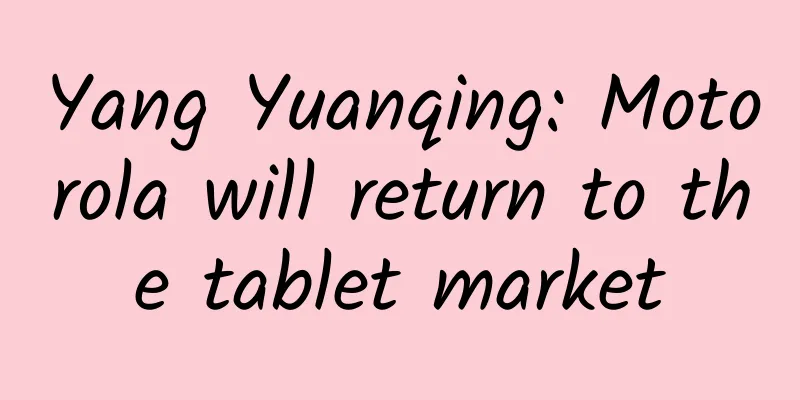If these scenes cannot be connected, O2O will not have a perfect ending

|
The title of CEO has changed from a symbol of aloofness to being as approachable as Mr. Wang next door, thanks to the nationwide entrepreneurial boom, but more importantly, it is the result of O2O. A few years ago, when talking about ideals and starting a business, you had to get together a few product, operation and technology experts to have a chance to gain capital recognition. Now, you can just create a public account and start a business. The continuous decline in the cost of starting a business has made many people cheer for the spring of entrepreneurship. However, Shelley's famous saying is also true in reverse: if spring is here, can winter be far behind? The mushrooming O2O services have created three types of players. The first are grassroots entrepreneurs, who are concentrated in shallow waters such as catering, community and auto after-sales service. They attract customers from traditional industries by building mobile platforms, attempting to first pipeline the latter and then gradually subvert them. The advantage of doing so is that once the initial dangerous period has passed, they can be quickly replicated and expanded. Successful ones include Diaoye. However, due to the low cost of trial and error, failure is also relative. They often become more and more motivated and keep fighting after repeated failures. For example, Yang Yang, who loves carpooling, established Xiaofanzhuo after his failure; the Bumblebee Taxi team created Aiwujijiwu. The other type is the transformation of traditional enterprises. They realize that the mobile era is a cruel history of growth. Instead of letting others subvert them, it is better to revolutionize themselves. A typical example is e-bag wash. Rongchang Laundry, which has a history of 24 years, was originally a giant in laundry and dyeing. The reason why they split the mature offline layout into the door-to-door O2O model is certainly not to make money - 99 yuan a bag plus subsidies is not a rational business model - but only to attract customers online. This kind of retreat as advance and defense as offense is in line with the transformation layout of traditional enterprises. Although it may not be successful, it will most likely live longer than grassroots startups. Of course, the most terrifying are the small businesses connected to the BAT platform. BAT does not care about their life or death, but the traffic is enough to generate blood for them, which makes it possible for the latter to become the Didi in the vertical field. In the capital winter, O2O, which was once as prosperous as spring, is now so haggard and withered. The reason why many business models cannot stand scrutiny, in addition to the valuation bubble, is mainly because several key scenarios in the product enclosure cannot be connected. Subsidies create false demand The first thing that is described in the O2O scenario is demand. In the lazy economy, seemingly plausible pain points are often discovered and transformed by the Internet, such as car washing. A large number of startups have discovered this seemingly low-end consumption scenario, and the problems are as follows: Poor experience Free pricing … However, the "core technology" that supports this service has been overlooked. When it comes to cleaning a car, a high-pressure water gun is still a simpler, more effective and more convincing way to wash a car than a door-to-door worker on a tricycle. What's more, the so-called door-to-door car washing still requires the owner to accompany the whole process, which is not up to standard for lazy people. From a business model perspective, the efficiency of door-to-door car washing is also questionable. An employee at a car wash can wash 50 cars a day without any problem, but even though door-to-door car washing covers a wider area, an employee can only wash 20 cars at most. This model, which sacrifices efficiency, improves the experience on the surface, but the service cost is higher, and the secondary conversion rate of new customers who rely on subsidies is extremely low. The long queues at car washes during holidays have long proved that this is not a high-frequency service. Users pay more attention to the results than the process. Door-to-door car washing lives in the embarrassment of dying without subsidies and committing chronic suicide with subsidies. Another example is home chefs. Their target customers are definitely not young white-collar workers who are too lazy to cook. The latter have easier ways to fill their stomachs than home chefs. Instead, they are only large families with three generations living together who like to stay at home and enjoy everything from cooking to eating. Even in such a small number of families, are the aunts who control the kitchen willing to hand over their position to a stranger? Even if they are willing, how can Chinese food that cannot be standardized create an exciting experience? This kind of pseudo-demand created by subsidies is difficult to maintain user retention and cannot generate cash flow. Even having a godfather may not guarantee the company’s survival, as is the case with ShaoFanFan, a company in which Lei Jun has invested three times. How to create cash flow at low cost This is crucial to profitability. In terms of insight into demand, Internet buses are ahead of all types of door-to-door services. At least they have discovered the rigid demand scenario of urban commuting, and they realize that the shortcomings of traditional public transportation services cannot be fully filled by personalized travel modes such as private cars and carpooling. As long as they can shake up customized buses and business shuttles, there will be opportunities. The core of the competition is of course not to open routes indiscriminately, but to compete for occupancy rate. Otherwise, the rental of empty buses alone can kill a startup, unless you have the advantage of attracting customers like Didi, and other products to balance the losses. The occupancy rate is not maintained by subsidies, but by monthly tickets. The latter stabilizes the customer base and maintains cash flow. Of course, users are willing to pay for monthly tickets. First of all, you have to provide more value-added services such as breakfast and WIFI. In the final analysis, it is still about operational capabilities and cost control. As for food delivery, it has become the exclusive domain of giants. The number of employees of New Meituan-Dianping has exceeded 30,000, and Tencent and Alibaba are behind it. Baidu Takeout has the support of wallets, and Daojia Food Club has high-end users. Not to mention operations, the exemptions and reductions in the payment process by New Meituan-Dianping or Baidu alone are enough to kill those startups that have to bear the 6‰ fee rate of WeChat Pay or Alipay (some are even higher). Service quality is difficult to control Among all O2O businesses, online education has the highest requirements for service quality and a high mortality rate. After experiencing a boom in 2013 with an average of 2.6 companies born every day, deaths followed one after another, with more than 30 companies dying in 2014. The reason is nothing more than too much bragging and too little in-depth cultivation, which manifests in the following three trends: 1. The high homogeneity of foreign teachers and K12 can only accelerate mergers and acquisitions and restructuring; 2. Giants intervened. Baidu acquired Chuanke.com, and Tencent, NetEase, Taobao, Xiaomi, Kingsoft, YY, etc. were also eyeing it; 3. Strong traditional educational institutions have launched online platforms to integrate vertical resources. Online education has not changed education itself, it has only changed the carrier of education, so there are many cheap innovations, such as Yu Jiawen, who is a troublemaker. He and his super course schedule follow the old path of Ma Jiajia's product becoming popular before the people become popular, and then draw the eyeballs that have been gathered with great difficulty to the product itself. At most, it solves the way of traditional education to obtain users, but it has no advantage in service. In service construction, online education should not only serve students, but also institutions and teachers. The initial investment is huge, and it takes a long time to reserve a sufficient number of course systems. The whole process is arduous and tedious. What can really be learned quickly through the Internet is actually more open public courses, but that is the private land of giants. NetEase Open Courses currently has more than 3,000 courses and 20,000 video resources. The newly launched WeChat Open Courses is committed to connecting online and offline. Another rising star is the e-commerce platform JD Mall. Its "Education and Training" channel focuses on five categories: early childhood education, art training, language training, online courses, and learning training. Therefore, the entire industry is filled with examples of startups that failed in their attempt to make quick money and had to exit in disgrace, such as Tizi.com. The rest are constantly transforming and changing their product lines. This only shows that one cannot use marketing thinking to operate, and one cannot use product thinking to provide services. Online education, an industry that requires deep cultivation, is not suitable for those entrepreneurs who are eager for quick success and instant benefits. Internet + Laboratory Another impulse of doing O2O is that once you have reliable products and a considerable user base, you should add to them in a timely manner. This has been practiced in many industries. For example, Uber and Didi have always been greedy for big and complete product expansion and would rather be excessive than indulgent. This is not because they have real confidence in these businesses, but rather other considerations. Although the money-burning taxi business is losing money, it has the basic users and can export them to similar products such as private cars and carpooling to find profit points. The logic that is not known to outsiders is that more losses means more users, and investors who get deeper and deeper into the trap will be unable to extricate themselves from the excitement of unicorns. Wang Wei's SF Express Heike tried another way, that is, whether it is qualified to do O2O with warehousing logistics and distribution resources. His original intention was not necessarily to have high expectations for community O2O, but to find another channel for labor-intensive express delivery companies to upgrade to "express delivery station community convenience store offline experience store", or to say that SF Express, which works for e-commerce, wants to use community e-commerce to complete a counterattack. The imagined scenario includes, if users skip the link of waiting for express delivery at home and consume directly in the nearby Heike store, will they be happier? In fact, this is a false demand caused by misjudgment, and it has not created different advantages in cost and experience. Profitability Many entrepreneurs do not have the ambition to expand from the beginning, but the small and beautiful model must be supported by profits. It is not easy to make money with the pressure from big platforms burning money in front and the homogeneous competition from new entrants in the back. Maintaining a reasonable profit margin and finding users willing to pay through the continuity of services is a skill. The practice of many WeChat businesses killing old customers in their circle of friends cannot be considered a business model. Lean entrepreneurship requires the ability to carefully calculate costs and to set reasonable prices. This has high requirements for resources, operations, and services, involves brand building, requires strong user retention and conversion capabilities, and requires perseverance and patience from the team and investors. Unfortunately, there is no such entrepreneurial environment for O2O at present, but we can also see several future trends from it: 1. Channelization A good way to survive without selling out too early is to channelize. A typical example is P2P car rental, which is particularly difficult to raise funds because it cannot compete with listed companies such as China Auto Rental and eHi Car Rental, and faces the squeeze of Didi and Uber. For example, Youyou Car Rental tried to turn to time-sharing rental while accelerating electrification. By turning itself into a front-end user acquisition channel for electric vehicle companies, it won the support of car companies and benefited from the government's traffic management and pollution relief process, especially the layout of charging stations in first-tier cities. This can be considered a wise move. The integration with offline companies has created a temporary win-win relationship. Another example is Yidao Car Rental, which started early and arrived late in the travel market. It has been striving for service experience for many years but has become increasingly marginalized. Getting investment from LeTV is a helpless choice for channelization. No matter how Yidao's vehicles will become a display space for LeTV TVs, car systems or other new things in the future, it is beyond Yidao's control. 2. Platformization If you don't want to bear all the pressure alone, then becoming a cog in the huge machine of BAT, 58 Daojia, or even Didi or Uber is also a very pleasant choice. The significance of standing in line is obvious. Some of the most successful O2O companies in China are often not because they have obtained venture capital, but because they have the support of BAT-level systems. 3. Deepening In the first half of 2015, only one quarter of O2O start-up projects received Series B financing. The extremely unhealthy industry situation forced companies to return to the in-depth development of offline services from their previous unscrupulous marketing and loss-making expansion, and to explore profit margins beyond transactions and payment links. For example, fresh food e-commerce requires huge cold chain investment, high warehouse rents, and delivery costs that account for one-third of the average customer spending. If this part can be reasonably arranged and compressed in offline scenarios, there is considerable room for improvement. If the general loss of up to 25% can be controlled, they will have a competitive advantage at the same average customer spending. Of course, this also tests the team's ability to find high-profit explosive products among SKUs. The high growth and high mortality of O2O means the dangerous opportunities brought by the integration of online and offline. The premise of success is determination. For example, Huang Silang told Hu Wan in Let the Bullets Fly: "If you live, you will die sooner or later; if you die, you will live forever!" |
<<: A brief discussion on open source from the perspective of Swift programming language
>>: Why do users uninstall apps?
Recommend
Traffic sources and strategies for Amazon automatic advertising!
No matter how long you have been working on Amazo...
Audiobook "Return to the Ming Dynasty to Become a Prince" All 750 episodes of audio collection
By accident, Zheng Shaopeng, the ninth generation ...
Analyze Pinduoduo's event operation system and coupon gameplay!
Pinduoduo’s slogan is “More affordable, more fun”...
Marketing industry advice for 2020!
This article will be divided into three parts. Th...
Get out of the misunderstanding: What is the core of Microsoft's Surface brand mobile phone?
Given the tepid performance of Microsoft's Lu...
After 20 years of gene sequencing, we finally figured out what junk DNA is for
In 1990, the international human genome project w...
It turns out that you are this kind of hot pot: How does a self-heating hot pot “self-heat”?
Hotpot, as one of the traditional Chinese delicac...
Are aliens really here? Scientists make shocking statement: There is alien technology in the Pacific Ocean!
The claim that "aliens" left technology...
Breaking down the planning logic of big promotion membership activities!
1. Case Study Xiao Ming has been signing in at a ...
iOS 13 revealed: Dark mode, undo gesture, new volume UI
Apple will hold WWDC on June 3 this year and anno...
When MDR-1ABT meets NW-ZX100, Sony's high-tech technology makes audiophile headphones wireless
When talking about Sony, we can’t avoid talking a...
Crocodile: The misunderstood “game”
Some people think that crocodiles are just ugly &...
The most complete practical tutorial on Baidu Tieba traffic diversion: automatic posting + replying + grabbing posts, so that you have a steady stream of traffic
The most complete practical tutorial on Baidu Tie...
Alibaba’s road to internationalization: Using the Tmall model to run Taobao?
Recently, there is news that Alibaba's cross-...
Calendar: Holidays over Body: No, not yet
The Spring Festival holiday was like a tornado Th...









